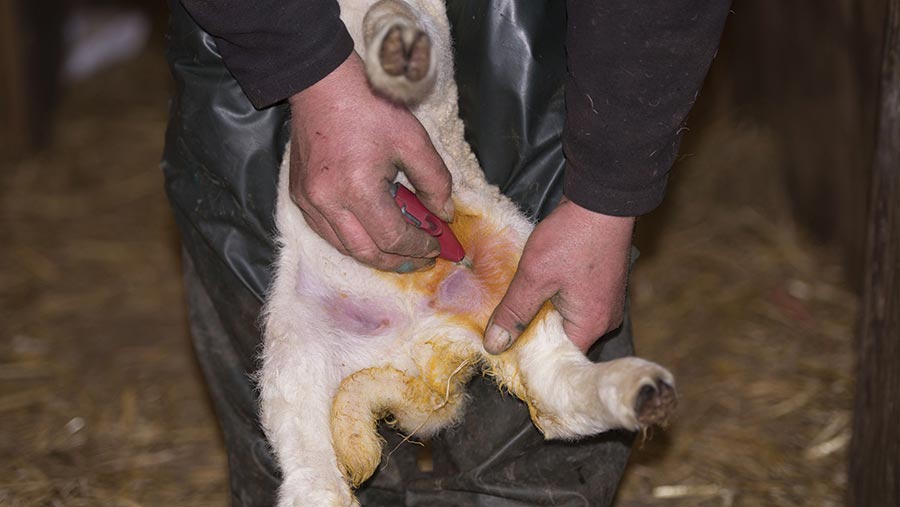Advice on protecting your flock from orf virus
 © John Eveson/FLPA/Tex/Shutterstock
© John Eveson/FLPA/Tex/Shutterstock Orf in sheep can be difficult to control, mainly because of the confusion that exists among producers over vaccination policy – as well as a lack of understanding about how this virulent virus can be transmitted.
Dr Colin McInnes, head of vaccines at Moredun, gives some advice about how to keep flocks free from infection.
What is orf?
Orf is a skin disease of sheep and goats and is common throughout the UK. It can strike at any time of the year and affects sheep of any age, but is most commonly seen just after lambing.
The disease is caused by a virus that only grows in the surface layers of the skin, but the virus will only cause an infection if the skin is already damaged.
What are the symptoms?
Animals with orf develop scabby lesions around the mouth and nostrils, although the infection may also affect other parts of the body, including the inside of the mouth, the lower legs and, in particular, the teats of nursing ewes.
How do you treat orf?
There is no treatment for it and as the disease is caused by a virus, it cannot be treated using antibiotics.
How the do sheep become infected?
The virus can only infect through broken skin. It can be carried on wool or on dead flakes of skin given the right conditions.
It can be introduced unknowingly by bought-in ewe replacements and tups even when these sheep show no symptoms of infection.
The virus is fairly robust and will survive in cool, dry conditions – often on feed troughs and penning. This equipment must be thoroughly disinfected between lambing times.
Should lambs be routinely vaccinated (scratched) against orf?
If a flock has the orf virus present it can be difficult to get rid of it because the virus can survive in dry conditions over winter from one year to the next. Failure to thoroughly clean and disinfect lambing sheds increases the risk of orf infection.

© FLPA/Rex/Shutterstock
If a flock has never had a problem with orf, should lambs be scratched as a preventative measure?
Definitely not. That’s the best way of introducing the virus. Only vaccinate if there is a diagnosed problem.
Once a flock has used the vaccine, should it continue to scratch lambs every year?
There are many different opinions. Some vets say yes, but many disagree. This should be discussed with your own vet.
Some farms always vaccinate lambs; others do so and then cease after a time with no ill effects, while other do the same, but then suffer infection immediately if vaccination is not undertaken.
The virus doesn’t seem to follow a pattern – much depends on the farm and the way the flock is managed. Ewes under stress are more likely to suffer from orf.
What others measures can be taken to avoid orf?
If possible avoid turning out ewes and lambs on to fields that carried orf-infected stock the previous year.
If a flock suffered from orf at lambing time and lambs were scratched, what policy should I adopt for next season’s lambing?
Steam-clean or thoroughly disinfect lambing sheds and all equipment and take advice from your vet about further vaccination.
When lambs are scratched (and it must be under the front leg) the scab that forms is laden with virus particles. When these scabs fall off they create a potential pool of infection for the following year.
Are lambs at grass at less risk from infection than lambs that are housed?
Because the virus enters through broken skin, every effort should be made to remove thistles or other potentially abrasive vegetation from pastures. This can reduce the risk of lambs suffering from any abrasion around the mouth and so providing an opportunity for infection.
Can sheep that have been vaccinated become reinfected?
Yes, as can sheep that have had orf infection. But on subsequent “infections” the lesions are not as severe as the initial occurrence.
If just a few lambs are infected, do all the lambs have to be vaccinated?
Probably yes, but seek veterinary advice. As well as the welfare issue, untreated lambs are more prone to secondary infection.
